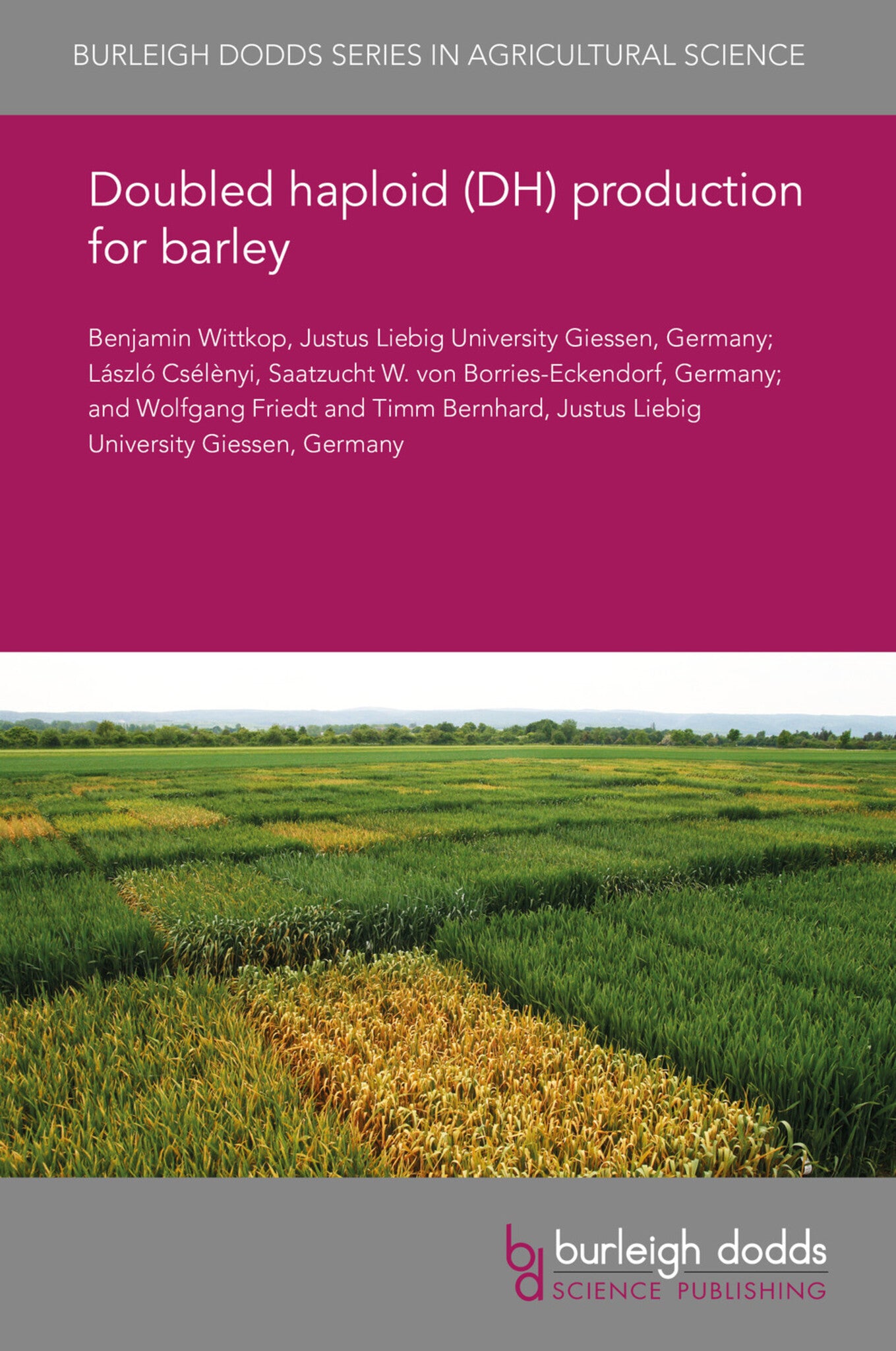We're sorry. An error has occurred
Please cancel or retry.
Doubled haploid (DH) production for barley
Regular price
£25.00
Sale price
£25.00
Regular price
£25.00
Unit price
/
per
Sale
Sold out
Re-stocking soon
Current European barley breeding programs predominately rely on doubled haploid (DH) technology delivering several essential advantages, such as accelerated development of homozygous genotypes, ear...
Read More

Some error occured while loading the Quick View. Please close the Quick View and try reloading the page.
Couldn't load pickup availability
- Format:
-
27 June 2019

Current European barley breeding programs predominately rely on doubled haploid (DH) technology delivering several essential advantages, such as accelerated development of homozygous genotypes, early recognition of major recessive traits, enabling to select faster and much more robust, and facilitation of maintenance breeding starting directly from homozygotes. This chapter gives a general overview of the different methods involved in doubled haploid technology, focusing on their relevance the application in practical barley breeding programs. The chapter examines wide hybridization, anther culture (AC), isolated microspore culture (MC) and parthenogenesis.

Price: £25.00
Publisher: Burleigh Dodds Science Publishing
Imprint: Burleigh Dodds Science Publishing
Series: Burleigh Dodds Series in Agricultural Science
Publication Date:
27 June 2019
ISBN: 9781838798239
Format: eBook
BISACs:
TECHNOLOGY & ENGINEERING / Agriculture / Sustainable Agriculture, Agronomy and crop production, TECHNOLOGY & ENGINEERING / Agriculture / Agronomy / Crop Science, Sustainable agriculture

1 Introduction 2 DH technology in plant breeding with special reference to barley 3 Wide hybridization: Hordeum bulbosum method 4 Anther culture and isolated microspore culture 5 Parthenogenesis: hap Inducer 6 Modern application of DH techniques in practical breeding 7 Conclusion 8 Where to look for further information 9 References



